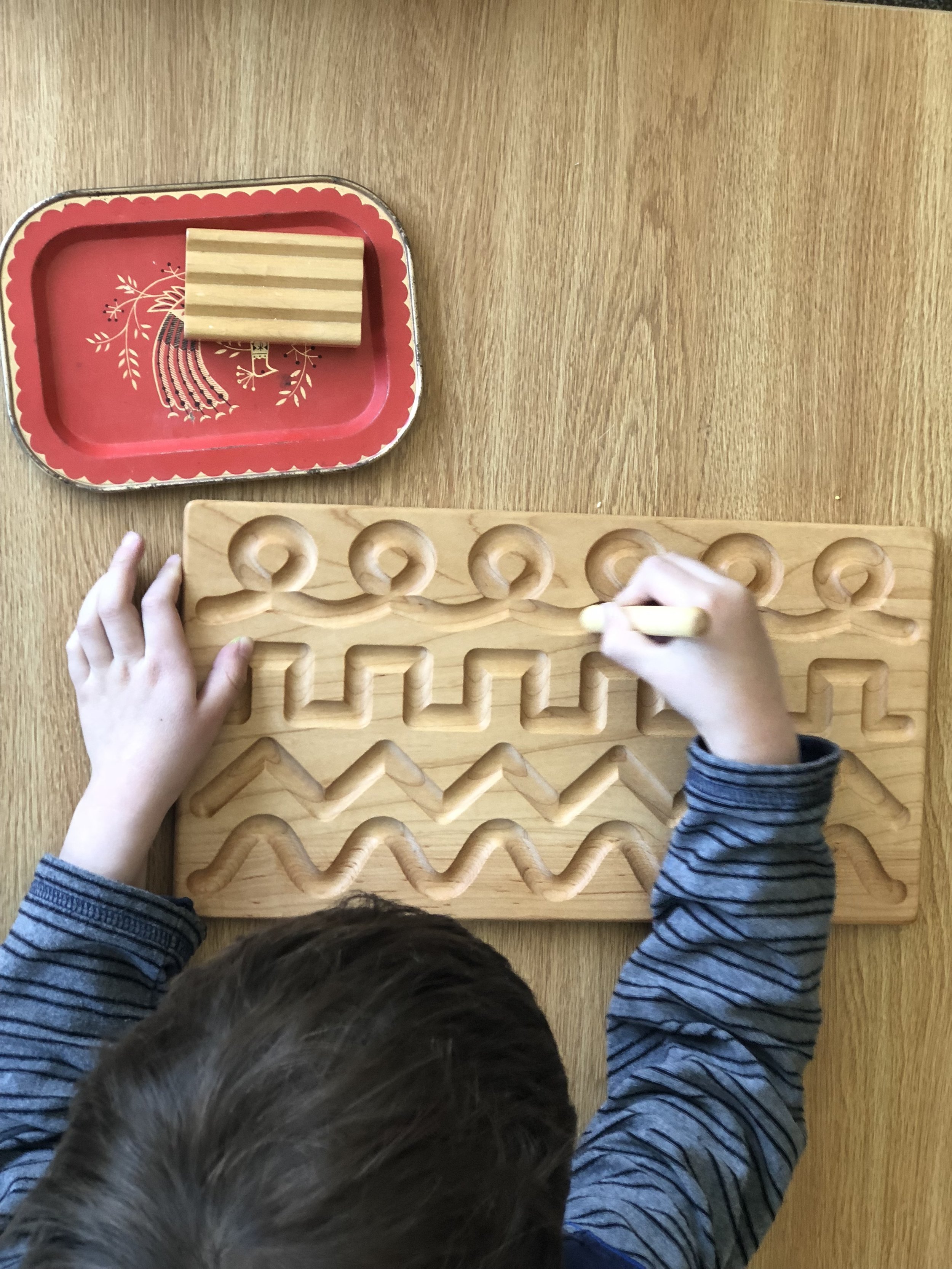The Movable Alphabet and Tips for Supporting Your Child's Learning At Home
The Movable Alphabet. This material is truly beautiful, serves many purposes, exercises a lot of skills and can aid in reading and writing in so many ways.
We first introduce The Movable Alphabet by just showing a child how lovely it is, how each letter has its own box, vowels are blue and consonants are pink (some models vary slightly between pink and blue and red and blue). The introductory lesson always includes tidying up each section and making sure all the letter cutouts are stacked nicely.
Phonetic writing with a tabletop Movable Alphabet.
Typically some beginning sounds are s, m, t, p and a. This combination of sounds are great to introduce first because they can form many C-V-C (consonant - vowel - consonant) words which can be sounded out and read by young children. When a child has a firm grasp on these sounds, we can take out The Movable Alphabet (TMA) to introduce "sound families." One sound family is the “-at” family. A teacher may take out one “a” and one “t” to form “at”. We may then take out s and make the word sat. We can say the sounds of these letters, blend them together and try to hear the full word in our sounds. We can swap an s for p and get “pat.” We can swap p for m and read “mat.” and so on and so forth. A child sees that so many words can be formed with these few letters - and they can begin to read!
A child reenacting a story book.
Something lovely about TMA is that it allows the child JUST to think about the sounds of a letter. We aren’t asking them to combine skills and worry about writing the letters with pencil and paper as well. With that said, we may ask a child to record their “writing” with TMA when they are ready for that next step. Isolating these skills is also why we may ask a child to answer a question we ask with TMA - they can think of what they want to say, try to find the sounds, write them with TMA - one thing they don’t have to do is remember how to hold their pencil, form their letters, worry about line placement - that can be saved for a different lesson! Sometimes we don’t realize how much we ask of a child - in the Montessori classroom, we try to break it down skill by skill until they’ve mastered each thing - then we can have them combine these skills.
Using letter stones, stamps and paper visuals to reinforce letter formation.
Many Montessori children find they are able to “write” with TMA before they can read (or so they think!). Hearing sounds within a word, breaking them down and writing with TMA gives them the skills to read before they even realize they can! It’s kind of an amazing thing to see happen when you allow a child to learn in this way.
Developing hand strength through non-letter writing exercises.
Parents always want to know: “What can we do at home?” “How can we support our child’s learning at home?”
Unless your child’s teacher suggests something, the answer is: whatever you are already currently doing! Parents don’t give themselves enough credit! Your child is learning from you and your life at home so much more than you may think. BUT, if your child is yearning for more Language activities at home - here are some suggestions:
To support hand strength:
Finger painting with water on a chalkboard
Using fat dry erase markers
Drawing with fat sidewalk chalk or egg shaped chalk
Using clothespins
Scissor cutting
Working with playdough or clay
To support sound recognition:
Play games at dinner - “I spy with my little eye something that starts with the sound sss.” (answer: sssspaghetti!)
In normal conversation: “Bobby is coming over to play! Oh Bobby starts with the sound b (say the sound but try not to say “buh” try to make a flat b sound) what else starts with that sound?”
Play rhyming games
To support reading of the CVC word:
Write down “secrets” on pieces of paper and ask your child to “read your mind.” Words such as mat, pat, sat, cat (after you know they know these sounds).
Go to your local library and ask your librarian for phonetically controlled texts. These books will be sure to only include CVC and beginning trick words. Beware! Many times “Early Reader” books from the store aren’t truly appropriate for early readers.
To support reading of the sentence:
Give your child a special Journal or Sketchbook (unlined) that they can write words or start to write sentences in. Encourage your child to hear the sounds in a word (elephant may look like elifunt). Phonetic writing is a crucial step in your child’s reading journey! As your child’s sound library grows, their spelling will improve.
To support the love and appreciation of the written word:
trips to the library!
story time
read (at least) one book to your child each day
have your child's "go to" activity be a small at-home library with a curated shelf of books instead of screen time. Rotate the books weekly to keep them interested!



